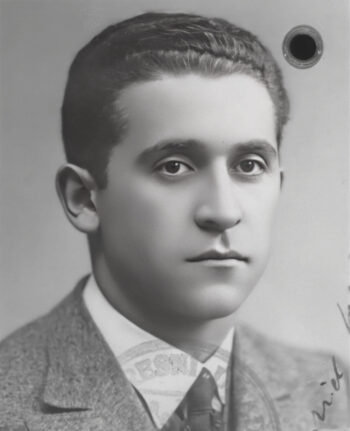Kulka, Erich

Erich Kulka (aka Schön, 18 Dec. 1911 – 13 July 1995) was a Czech Jew who was arrested due to his communist resistance activities, and spent time at the Theresienstadt Ghetto and in the camps at Dachau, Neuengamme and Auschwitz. In Auschwitz, he headed the inmate metalworking shop together with the Czech Jew Ota Kraus. This workshop was a communications hub for the Auschwitz resistance groups, providing Kraus and Kulka with the most recent information, rumors, lies and black-propaganda plans. (See also the entry on Michał Kula.)
After the war, they both wrote a book titled The Death Factory, first published in Czechia in 1946 (as Továrna na smrt), which contained a good deal of this (dis)information. A German translation was published by a Communist East-German publisher in 1957, and an English translation in 1966. In the book, the authors attempt to justify the Soviet propaganda lie of the four million Auschwitz victims by inventing mass deportation transports: in total, they claimed mass transports of unregistered Jews allegedly gassed on arrival for a total of 3,500,000 persons, adding 320,000 more victims who allegedly died at the camp for other reasons, and another 15,000 who allegedly died during the evacuation of the camp, thus arriving at a figure close to the Soviet propaganda lie of four million victims.
When it comes to extermination claims, their book is entirely based on hearsay and rumors, hence has little value. The only identifiable person they mention as a source of their information is a certain František Feldmann, a “dentist” among the Sonderkommando inmates. However, they did publish separately a long statement by their long-term friend Filip Müller in their book about his alleged experiences at Auschwitz as a Sonderkommando member. If Müller really had been a long-term member of this unit involved in dragging gassing victims out of the gas chambers and cremating them in the furnaces, one would have expected Müller to have informed them about many details. However, this is strikingly absent from their account, and where it does contain details, they are often wrong.
This lack of their knowledge becomes particularly apparent when they describe the cremation furnace at Crematoria II and III as a “three-stage furnace,” where air was presumably blown in at the bottom level, fuel was burned on the center level, and the corpses were placed – “two or three at a time” – at the top level. In fact, the furnaces were triple-muffle furnaces, not triple-stage furnaces, whose fuel was burned in their rear, air was blown in through openings in the muffle vault, and the corpses were placed in the muffle. Embers and ashes fell into the ash chamber beneath. Furthermore, the muffles were designed to accommodate only one corpse, not three. Müller should have known this and should have corrected his friends’ faulty description – but he didn’t.
Here are some more lies spread by Kraus and Kulka:
- There were fake showers in the gas chamber – when, in fact, they were real showers.
- Two iron pillars served to feed in the gas – while there is no trace of any such pillar, although the orthodoxy insists that there were four of them, not two.
- All four crematoria had the same capacity of 2,000 people for one gassing batch – although the Crematoria IV & V had a completely different layout, and in any case, 2,000 people on 210 m² (Morgue #1 of Crematoria II and III) would have led to an unrealistic packing density of some 9.5 people per m².
- They claimed a cremation speed of three corpses at once within 20 minutes – in muffles designed to burn just one corpse within an hour.
- They claimed that the Germans operated an inmate sauna inside the Birkenau Camp in order to torture inmates. The sauna was real, and the treatment which Kraus/Kulka described is a normal sauna procedure, thoroughly misunderstood by the uneducated authors. (See the entry on saunas.)
This book is a typical Jewish-communist propaganda work of the Stalinist era.
Some time after writing his book, Kulka also testified as a witness during the Polish show trial against members of the former Auschwitz camp staff. He claimed there that a commission of senior figures from the Reich, including Eichmann and Pohl, arrived at Auschwitz in February 1943, which is pure fiction, and that “often entire medical commissions of technicians and scientists came from Berlin” to study the gassings, which is just another preposterous lie. He also repeated from his book the wild story about the alleged fate of the inmates lodged in the Auschwitz family camp, and although there is not a documental shred to back it up, his tale found official recognition by way of entry in Danuta Czech’s Auschwitz Chronicle (see Mattogno 2016a, pp. 160-164).
(For details, see Mattogno 2019, pp. 522f.; 2021d, pp. 78-88; in Mattogno 2021, see entries for Kulka in the index of names.)
Kulka dedicated much of his time after the war to interviewing other Auschwitz survivors, with a focus on former alleged members of the Sonderkommando. He cooperated closely with the young Israeli historian Gideon Greif, who continued these efforts, and has published two books on the Sonderkommando so far (see Mattogno 2022e).

You need to be a registered user, logged into your account, and your comment must comply with our Acceptable Use Policy, for your comment to get published. (Click here to log in or register.)